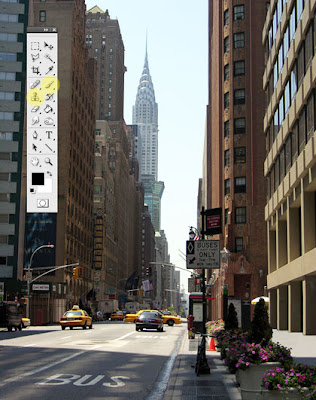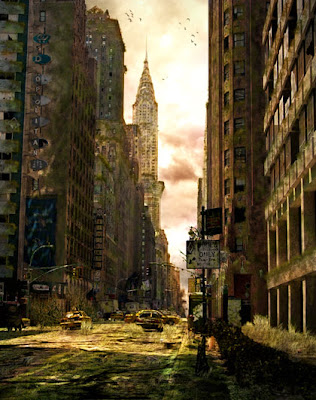We see ruins nearly every day in the news and they have nothing charming or romantic. They tell us about disasters, loss and misery. Not long ago we’ve seen the devastations caused by the tsunami in Asia, a little later there could be seen the results of Hurricane Katrina and that of the great earthquake in China. And these natural disasters are reinforced by the frequently wars with their bombs and rockets, which are destroying with increasing regularity dreams, families and lives of so many people.


Survivors in front of ruins mourning their dead and their losses. These are the typical ruin images, with which we are confronted almost every day.
But on the other hand the web is full of sites devoted to ruins. It seems that there are a lot of people (me included) who are roaming through ruins, taking nice photos, which are presented like some of the most beautiful and enchanting places of the world.
Even worse these guys are no bunch of necrophilic perverts because they are not alone, they are part of a mass phenomenon. Some of the most successful movies, which produced Hollywood in the last decades, are using decay and ruins as sensational scenery.

And there are not only the movies. If you have a look on fantasy paintings and modern comics you will soon discover, that’s above all a good ruin setting which provides the spice in this kind of art.


Hollywood and comics merged into video games, and so it isn’t surprising at all, that ruins provide an important part of the scenery of the better games.

Ruins became so popular that there are even sites in internet offering tawdry ruins by the dozen as screensavers.

Maybe that someone will interpret this as a sign of bad taste inherent in any use of ruin images. I don’t think so, because ruins as symbolic décor have in fact infiltrated the very esthetical world of fashion and received in this way the higher consecrations of art.

This image by the fashion photographer David LaChapelle was first published in 2005 in the Vogue Italy and is now exhibited by the Helmut Newton Foundation in the exhibition "Men, War & Peace".
I hope to have demonstrated, that the fascination for ruins spreads over a great part of modern esthetics. With this blog I will try to show how ruins are used today in popular culture – i.e. photography, film, painting, comics, video games, fashion, architecture. Further I will investigate how the interpretation of ruins has changed over the course of history. This will be more a trip into art history because in older times there where neither movies nor video games. But I think that many of our modern concepts and opinions regarding ruins have their roots there.
And despite I’m no great photographer I fear that I cannot abstain from posting some of my own photos. Sure, nearly every day I stumble upon better ones in the web. But everybody finds his own ruins, has his own point of view, and because of that probably somebody will get an inspiration by my photos to visit some places.



 One of the best examples is the MahaNakhon tower, which shall be build in Bangkok. The project is headed by Ole Scheeren, one of the leading architects of the Office for Metropolitan Architecture (OMA) and also the lead architect on Beijing’s CCTV headquarters.
One of the best examples is the MahaNakhon tower, which shall be build in Bangkok. The project is headed by Ole Scheeren, one of the leading architects of the Office for Metropolitan Architecture (OMA) and also the lead architect on Beijing’s CCTV headquarters.







































